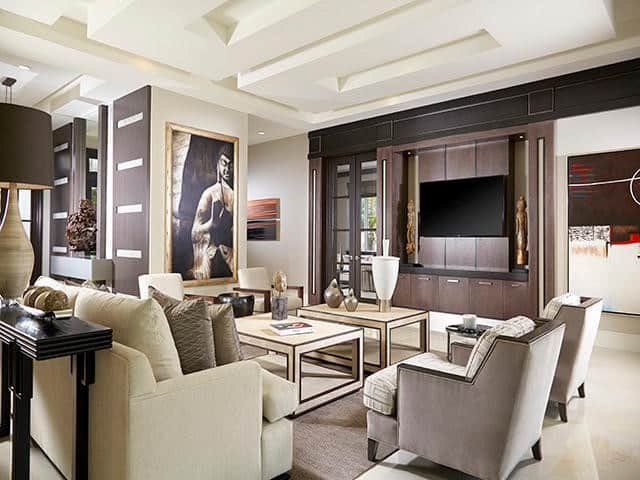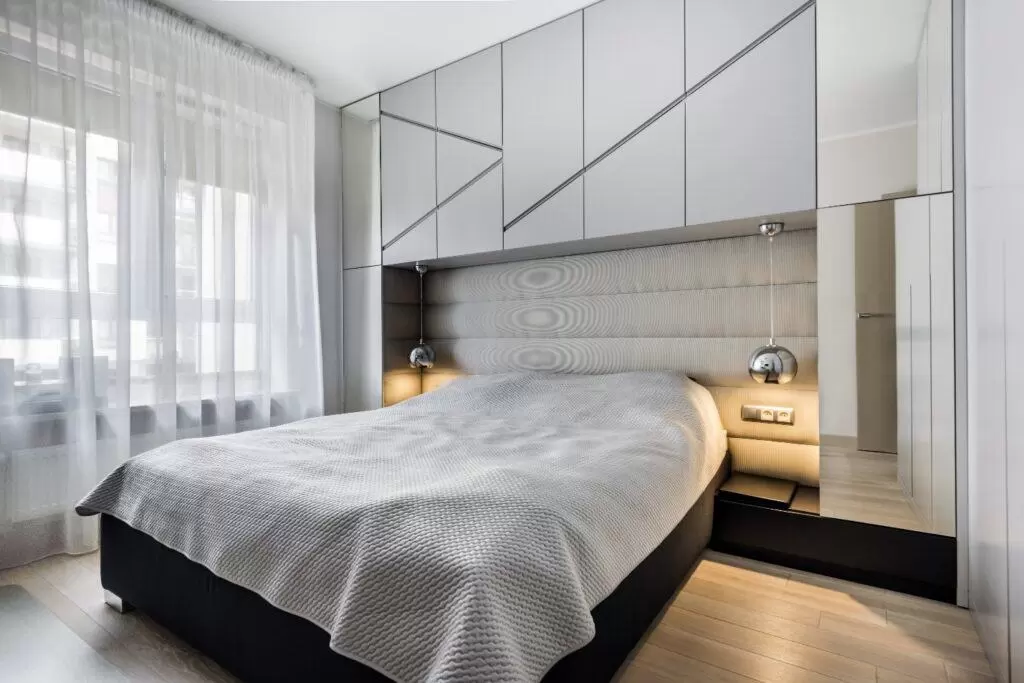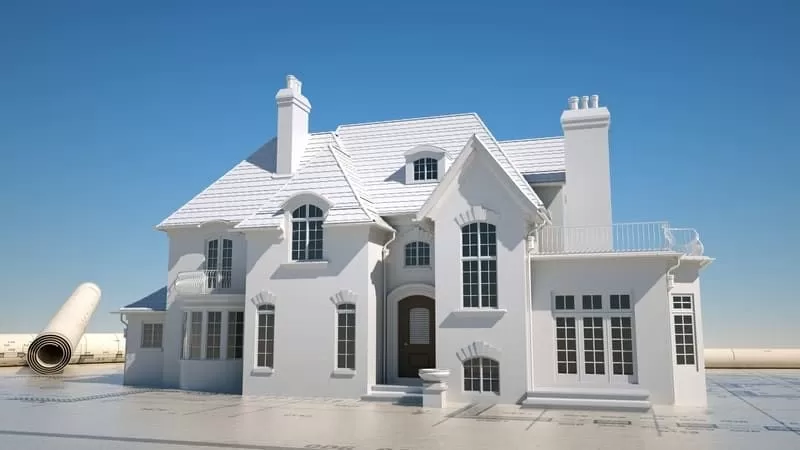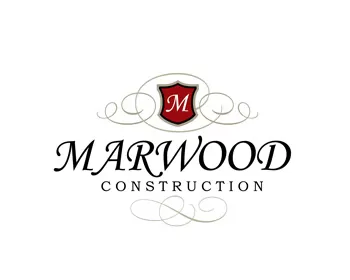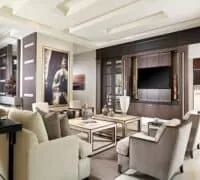
Creating the architectural plans and complimenting home interior design for a new home is exciting, challenging and requires an enormous amount of effort on behalf of the owners and supporting professionals.
One of the most important requirements for custom home building is the development of the building plans and supportive documents in visualizing a comprehensive house design.
If you are planning on building a custom home you are going to need construction building plans drawn by a custom home designer or architect.
In addition, you will need to be able to provide your architect with directions for architectural design features for your building plans.
Preparing and planning the architectural design and home interior design for your custom home is an exciting time in anyone’s life.
It requires a disciplined approach on behalf of the entire design team, which normally consist of the architect, the builder and the owners.
An additional member of many design teams is the interior designer who provides color coordinating and furniture planning for the home interior design.
The process of building a custom home requires the owners to provide the personal direction to the design team which includes the type of architecture they desire and the houses essential features needed.
The architecture of the building plans will require your selected preferences for decisions like total square footage, one- or two-story home, features and the number of baths and rooms.
Learn about how the home interior design intertwines with the building design of a Houston custom home
The architect and builder will also require a copy of the property survey and the
deed restrictions guidelines for the house selected.
These are necessary pre-design documents that provide the architect the outer boundaries for developing the house envelope to properly fit within the property building setback lines, as well as the designing the house to the restrictive guidelines of the deed restrictions.
Developing custom house plans is a little like putting a gig saw puzzle together. It takes time and patience to first recognize your wish list and then secondly to recognize your floor plan room space priorities.
This leads to the final step of the concept design by placing the room spaces into the building plans footprint for functional and aesthetic value.
Architecture requires a disciplined approach of maintaining the true principles of building design while introducing the influences of the end user.
Designing and building a custom house for clients can be a difficult and challenging proposition.
The design process starts with the architect and design team obtaining a clear understanding of their client’s wants, needs and lifestyle.
Then it is up to the project team to transform these visions into a functional and aesthetically pleasing house plan.
Please see our luxury custom home design check list to help you get organized; check list
This architectural process demands that the design team set realistic expectations for the client to guide and advise them through the house planning progression.
It requires the architect to employ an honest and tactful approach to fulfill the potential of this quest.
Balancing the principles of home interior design with the sometime emotional decision making of the client.
The interior designer’s job is to add color, fabrics and furnishings that accent the architectural features and theme, while creating a comfortable environment.
This is a very challenging role to play in an interior designer without encroaching into the architects’ responsibilities.
Effective and open communication is essential amongst the collaborating professionals before and during the architectural phase.
Developing Your Wish List
The architectural process begins with developing a wish list of products and life style needs for your new custom house.
There are many ways to accomplish collecting home ideas. Searching the internet is the most popular way to find home images that represent your ideas.
Sites like Houzz.com and Pinterest.com are websites that are loaded with home interior design ideas and decorating examples.
These sites offer and allow you to collect ideas and place them in your personalized file folders to stay organized.
There are other effective methods that are also commonly used. Home and lifestyle magazines are good sources for collecting interior design resources.
Collecting photos from house for sale on the multiple listing services helps communicates complicated images.
Product showrooms are an also a very good way to see and touch the product options available.
Your wish list will be helpful in explaining and guide the team with your interior home ideas.
You can also collect sample pieces and specs on the materials that you are most interested in.
Whatever method you use to gather your wish list, it plays an essential role in communicating your vision to the designers. Watch our video on architectural styles.
Developing Your Budget
Once you have established some general perimeters for your future house style, square footage and a building site, you can develop a preliminary budget.
The initial target budget should be plus or minus 25% of the amount you are willing to invest in the construction of your future house.
This amount also becomes the foundation for creating a more detailed line-item construction budget as the house plans are developed.
During the early stages of the home design process your design team will define general room size dimensions.
They will create artistic renderings of the houses profile and roof lines. With these details and the preliminary finish schedule your custom builder can develop a product selection allowance schedule.
The house interior plan plays a critical role in developing the construction budget.
They will provide the owner samples of materials and products to incorporate into the construction finishes.
With the owner’s approval, these become the standards for the product selection allowances used to create the construction budget.
The allowance schedule provides the owner a representative product cost without actually finalizing your product color selections.
This can be helpful managing your time and stress during the demands of the architectural process.
As you complete the product selections, the allowance amounts are then reflected in fixed cost.
Finalizing product and material selections is one of the most significant benefits of interior design during the pre-construction phase.
Finalizing as many product selections as soon as possible adds greater confidence to the certainty of the construction budget total.
Architectural Design Process
The architectural process typically consists of 3 principal stages. The first is the concept drawings stage.
During this stage the design team develops broad sketches to represent the general idea of the owner’s wish list.
Armed with an investment budget and the target square footage the architect will create some alternative concept home designs.
During the process of developing the home’s floor plan with your designers, the architect will create concept designs.
These would be sketches that would block out the floor plan footprints and perspectives of the of key interior spaces and elevation profiles.
This the best time for the interior designer to share your dedicated floor space priorities with the design team for the home interior.
There will always be high priced design features that result during the preliminary architectural stage.
It is the responsibility of the project team to keep the owner in touch with major architectural features they will have a significant impact on the preliminary budget.
The project team is a concierge service which provides the owner the required guidance throughout the designing process.
After the owner approves the concept design, the design team will move to the architectural development stage.
During this stage of architecture, the architect develops more detailed floor plans, house elevations and interior design features.
The custom home designer begins to draw the custom home to scale and provides dimensions to the home plans.
This is also when the owners begin defining the type of products and architectural features they want.
As this stage approaches completion, the general contractor will begin developing the construction budget.
This is the best time to recognize if the cost is in line with the concept budget.
The interior designer collaborates with the project design team to conduct any necessary value engineering to modify architectural features that are out of line with the target budget.
Provided the construction cost are in alignment with the concept budget, then the design team moves forward with completing the final drawings.
If not, the team presents value engineering options to the owners for consideration to get the projected construction cost back in line with the preliminary budget.
The third stage is when the structural engineer develops the structural calculations and engineering design details.
Once complete the custom home designer can complete of the final drawings to submit for permitting, while the custom builder prepares the final construction cost for contract.
Working With Professional You Enjoy and Trust
The architectural process is facilitated by a professional architect, interior designer and general contractor.
These professionals become the owner’s trusted advisers through the design and construction process.
During special circumstances the owner may include a landscape architect to the project team for design of the pool, deck and lot landscaping.
In any case, the owner should be able to trust the advice of these professional at all times.
Working with your trusted adviser has other benefits that the owner should be aware.
The design team has the capabilities to provide effective value engineering if the budget expands beyond a comfortable range during interior design.
They can offer alternative means and methods to achieve a particular feature or substitute products to achieve a special look.
The greatest benefit of working with your professional advisers is that they consistently provide the you with good guidance for decision making.
They also save you time and money. These are professionals with many years of experience. They are effective and efficient at their craft.
The architecture for house plans does not need to be an intimidating or a stressful experience.
The owner should have a clear understanding of the design process and their personal role during design and construction.
Most importantly surround themselves with talented and trusted advisers.
Conclusion
Building design requires an architecture to create a home interior design for building plan for home construction.
This process takes place with a project team supporting the house design needs of the owners.
The goals for developing building plans are to solicit general contractor bids and the building a custom home.
For a vast amount of design and construction builder resources.






